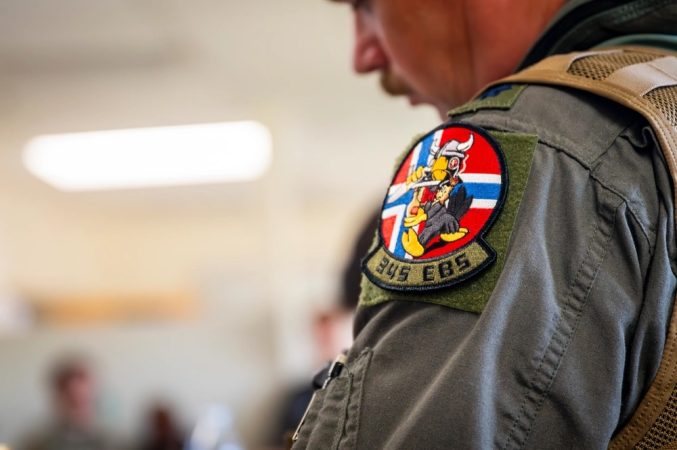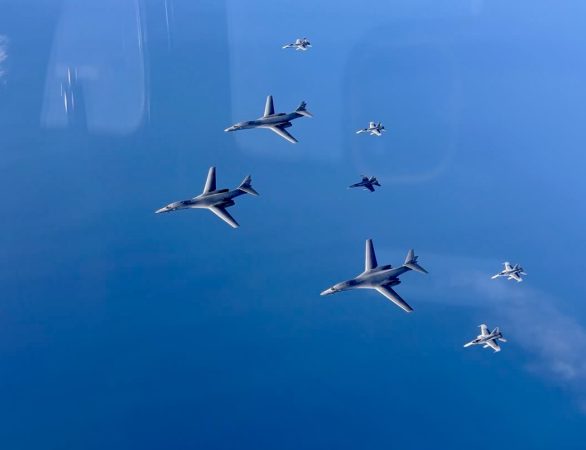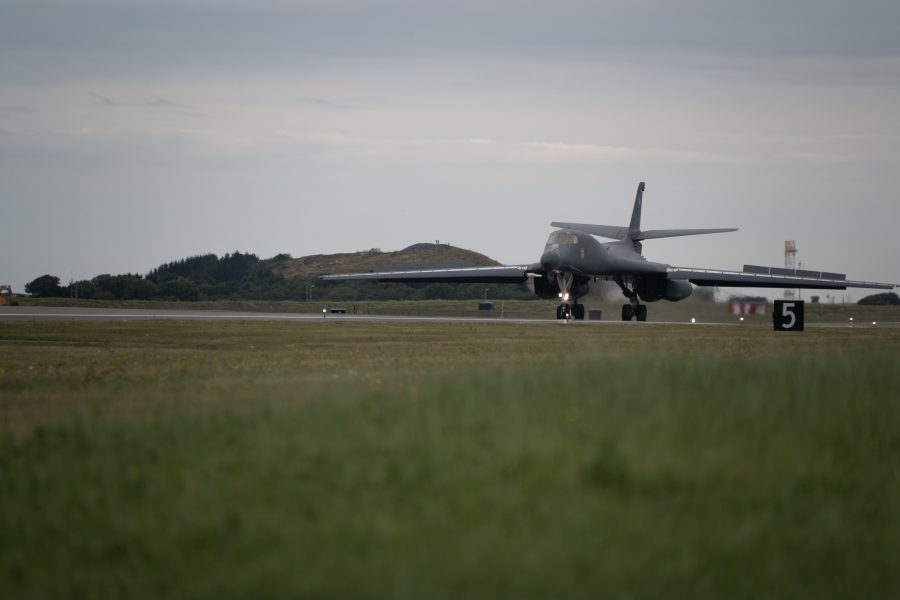America’s only supersonic bomber, the B-1B Lancer, arrived in Norway on Aug. 9 to train with European allies as part of a bomber task force—small international deployments of Air Force bombers meant to reassure allies and build closer ties with their air forces.
The 4,800-mile voyage for members of the 345th Bomb Squadron comes on the heels of Red Flag 25-3, a large training exercise which saw Lancer crews fly daily sorties from their home at Dyess Air Force Base, Texas, to the Nevada Test and Training Range for simulated strike missions in a contested airspace.
They can expect similar missions in Norway, where Airmen will hone “the speed and accuracy with which bombers and fighters are able to act against threats in real time,” according to a press release from U.S. Air Forces in Europe. Those threats will be both air- and ground-based, the release said.
It was not immediately clear how many B-1s traveled to Norway, but photos show at least three of the aircraft en route. Their destination, Ørland Air Station, is Norway’s central F-35 stealth fighter base.
“This deployment allows us to train the way we fight—integrated with our NATO Allies, ready and adaptive,” Lt. Col. Eric Alvarez, 345th Bomb Squadron deployed commander, said in the release. “It’s about building experience and trust together, enhancing readiness, and staying sharp in dynamic environments.”

The first time B-1s deployed to Norway was in March 2021, in a push to gain experience operating aircraft in Arctic conditions. Before that, bombers in the region usually deployed out of the more temperate United Kingdom.
In 2023, B-1s from Dyess flew over the region with Scandinavian countries as part of the exercise Arctic Challenge 2023—just a few weeks before that, a B-1 was intercepted by a Russian fighter over the Baltic Sea. The international tempo has not slowed since then, with Lancers flying to Japan, South Korea, Australia, Türkiye, and elsewhere as part of various bomber task forces.
It is not clear how long the Dyess B-1s will be in Norway, but bomber task forces can sometimes last a month or more.
“Today’s mission isn’t just about bombers,” U.S. Air Forces in Europe-Air Forces Africa wrote in a Facebook post. “It’s about standing side-by-side with our Allies and partners, showing that when we move together, we stay strong.”



